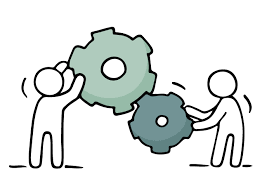Unlocking Growth: A Comprehensive Guide to Customer Segmentation
In today's fiercely competitive market, understanding your customer is paramount. Customer segmentation, a strategic approach to dividing your audience into distinct groups based on shared characteristics, provides a powerful pathway to achieving this understanding and driving significant business growth. By tailoring your marketing and sales strategies to resonate with each segment's unique needs and preferences, you maximize your potential for success. This guide delves into the art and science of effective customer segmentation, offering actionable insights and expert advice.
1. Deeply Understanding Your Customer Base: The Foundation of Success
Before embarking on customer segmentation, a thorough understanding of your existing customers is essential. Who are they? What motivates their purchasing decisions? What are their unmet needs and pain points? Gathering insightful data through surveys, interviews, focus groups, and meticulous data analysis paints a comprehensive picture of your target audience, laying a solid foundation for effective segmentation.
2. Leveraging Demographics: A Starting Point for Segmentation
Demographics offer a valuable starting point for categorizing your customers. Factors such as age, gender, location, income level, education, occupation, and family status provide a broad framework for understanding your audience's general characteristics. For instance, a luxury goods retailer will naturally focus on higher-income demographics, while a budget-friendly clothing brand might target younger consumers with lower disposable income.
3. Unveiling Psychographics: Delving into Customer Mindset
Psychographics delve deeper, exploring the psychological aspects that influence consumer behavior. Understanding your customers' values, lifestyles, interests, attitudes, and personality traits allows you to craft marketing messages that resonate on a deeper emotional level. For example, a brand promoting sustainable products will target customers who prioritize environmental consciousness and ethical consumption.
4. Behavioral Segmentation: Analyzing Purchase Patterns and Engagement
Analyzing customer behavior reveals valuable insights into purchasing patterns, brand loyalty, and engagement levels. Identifying segments based on factors such as purchase frequency, average order value, website activity, and social media interactions allows for highly targeted marketing campaigns. For instance, rewarding high-value customers with exclusive offers can foster loyalty and increase lifetime value.
5. Addressing Customer Needs and Pain Points: Providing Solutions
Each customer segment possesses unique needs and pain points. Identifying these unmet needs is crucial for developing products and services that provide tailored solutions. For instance, a fitness app might offer specialized programs catering to different fitness levels and goals, addressing the unique needs of beginners versus experienced athletes.
6. Iterative Refinement: A Continuous Process of Improvement
Customer segmentation is not a static process. Regular assessment and refinement are crucial to ensure the continued effectiveness of your strategies. Monitor key performance indicators (KPIs) such as customer acquisition cost, conversion rates, customer lifetime value, and customer churn. Adjust your segments and marketing approaches based on data-driven insights to stay ahead of the curve and adapt to evolving market dynamics.
7. Personalization: Creating Resonant Marketing Messages
Once you have defined your customer segments, personalization becomes key. Craft targeted marketing campaigns that directly address each segment's specific needs, desires, and pain points. Personalized messaging fosters stronger connections, increases engagement, and improves the chances of conversion.
8. Multi-Channel Engagement: Reaching Your Audience Where They Are
Different customer segments prefer different communication channels. Employ a multi-channel approach, utilizing email marketing, social media, SMS messaging, and other platforms to reach your audience where they are most receptive. A consistent and integrated multi-channel strategy maximizes your reach and impact.
9. Data-Driven Measurement: Tracking Your Success
Tracking key metrics provides crucial insights into the effectiveness of your segmentation strategy. Monitor conversion rates, customer acquisition costs, customer lifetime value, and other relevant metrics. This data informs future strategies and helps optimize your approach for maximum return on investment (ROI).
10. Prioritizing Customer Retention: Building Long-Term Relationships
Customer retention is as important, if not more important, than customer acquisition. Nurture existing relationships through personalized interactions, loyalty programs, and exceptional customer service. Remember, retaining customers is generally more cost-effective than acquiring new ones.
11. Gaining a Competitive Edge: Differentiation Through Understanding
Effective customer segmentation provides a significant competitive advantage. By deeply understanding your target audience, you can differentiate your brand, create unique value propositions, and build strong customer loyalty, ultimately driving sustained growth.
12. Real-World Example: The Fitness Equipment Industry
Consider a fitness equipment company segmenting its market into busy professionals and families. For busy professionals, marketing materials emphasize space-saving designs and quick workout routines. For families, the focus shifts to multi-functional equipment that caters to various ages and fitness levels, promoting family bonding through shared fitness activities.
13. Expert Advice: Strategic Planning, Implementation, and Adaptation
Successful customer segmentation requires meticulous planning, effective execution, and a willingness to adapt. Regularly review your strategy, gather feedback, and make data-driven adjustments to ensure its continued relevance and effectiveness in a dynamic market landscape.
14. Reflection and Action: Implementing Customer Segmentation in Your Business
Consider how customer segmentation can benefit your business. What steps can you take to implement this powerful strategy and unlock significant growth potential?
Conclusion: Embracing Customer Segmentation for Sustainable Growth
Customer segmentation is an invaluable tool for any organization striving for sustainable growth. By understanding the unique characteristics, needs, and preferences of your target audience, you can create highly effective, resonant marketing campaigns that drive customer loyalty, increase sales, and position your business for long-term success. Regular evaluation and adaptation are key to ensuring the ongoing effectiveness of your segmentation strategy in an ever-evolving marketplace.






